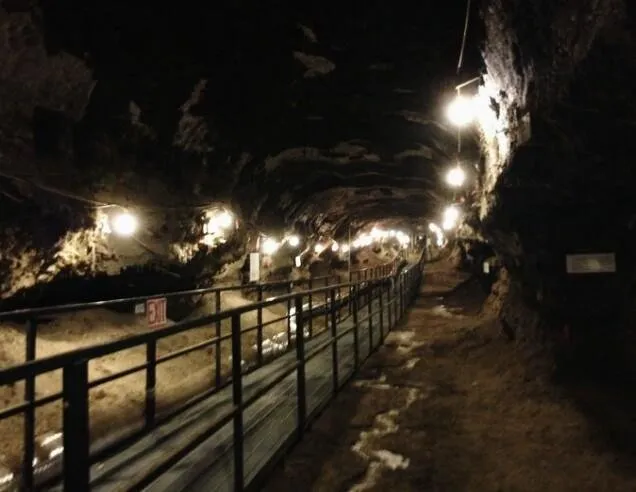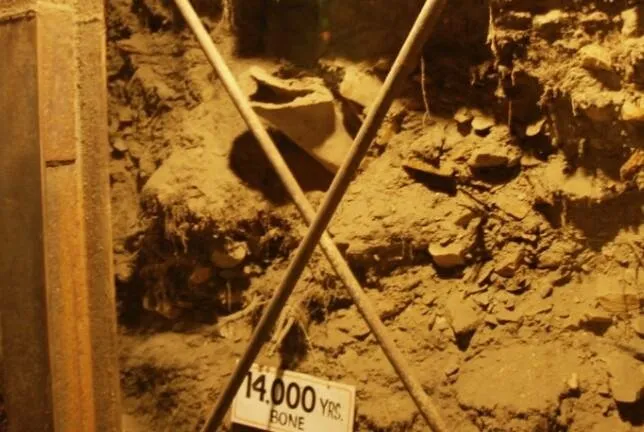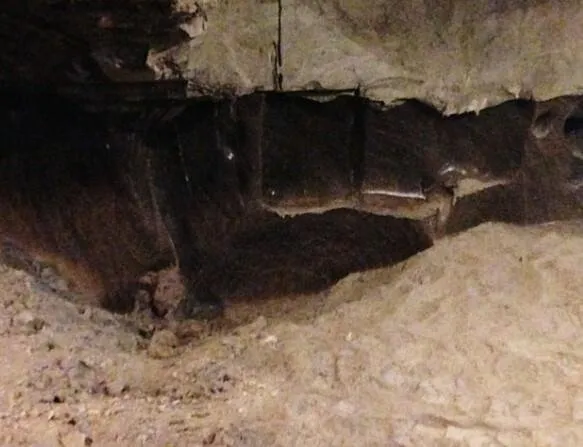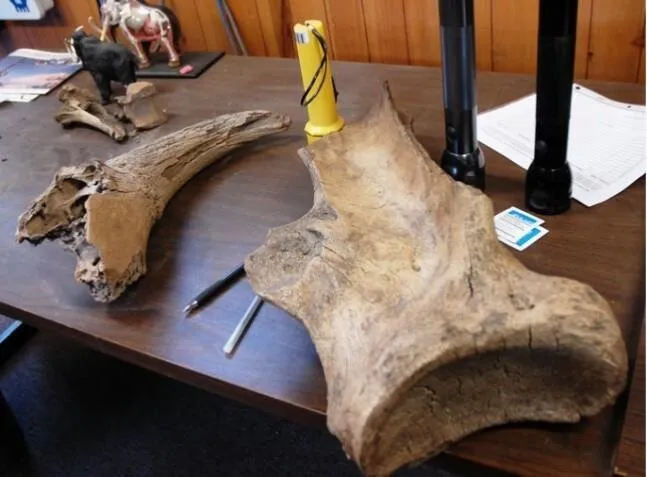
A short drive north of Fairbanks, Alaska, there may be a crimson shed caught right up towards a hillside. The shed appears unremarkable, besides for the door. It looks like a door to a stroll-in freezer, with thick insulation and a heavy latch. anything is at the back of that door needs to live very bloodless.
"Are you equipped to go interior?" asks Dr. Thomas Douglas, a geochemist on the U.S. navy Corps of Engineers.
at the back of the door is a geological time bomb, scientists say. no person knows exactly how big the bomb is. it could even be a dud that barely detonates. however the fallout might be so massive that it's felt all around the international. Now there may be proof that, inside the beyond few years, the bomb's timer has started out ticking.
Douglas opens the shed door, and we step internal. straight away, we're standing forty toes underneath ground, internal a tunnel carved into the hillside.
"that's a large leg right there," Douglas says as he factors to a large femur sticking out from the tunnel wall.
All around are signs and symptoms of extinct creatures. Tusks poke out of the ceiling and skulls stick up from the floor. however it's the fabric between the bones that pursuits Douglas the maximum: the permafrost.
in the 1960s, the army dug the tunnel so it can have a look at this unique surface, which covers approximately 1 / 4 of the Northern Hemisphere. In a few locations, the frozen soil extends downward extra than 1,000 toes, or approximately the peak of the Empire nation building.

A mammoth bone sticks out of the wall of the tunnel within the permafrost.
Technically, permafrost is frozen soil. but it's beneficial to think about it in terms of chocolate cake. generally, cake is soft, moist and spongy. Now if you take that cake, dip it into water and freeze it, the cake will become difficult or stiff. it's precisely what takes place to soil while you freeze it: wet, smooth soil turns difficult and stiff. that is permafrost.
For the first time in centuries, the Arctic permafrost is beginning to trade — unexpectedly. it is warming up. some locations are softening like a stick of butter left out at the kitchen counter.
In northern Alaska, the temperature at a few permafrost sites has risen by means of extra than four levels Fahrenheit because the Eighties, the countrywide Oceanic and Atmospheric administration reported in November. And in latest years, many spots have reached document temperatures.

"Arctic indicates no signal of returning to reliably frozen region of new past many years," NOAA wrote in its annual Arctic file Card remaining 12 months.
The outcomes of this warming ought to have ripple results around the sector. To provide an explanation for why, Douglas takes me deeper down into the tunnel.
"that is really an high-quality feature," he says, shining his flashlight up to the ceiling. Crispy grass is dangling upside-down above our heads.
"it's inexperienced grass — from 25,000 years in the past," he exclaims. "it's been preserved that manner for 25,000 years."

The permafrost is filled with the remains of ancient lifestyles. From prehistoric grass and bushes to woolly mammoths and woolly rhinoceroses, just about every creature that lived on the tundra over the last one hundred,000 years is buried and preserved down within the permafrost.
And all this life is manufactured from carbon. So there is a huge quantity of carbon buried down right here. "The permafrost includes two times as much carbon as is currently in Earth's ecosystem," Douglas says. "that is 1,six hundred billion metric heaps."
In reality, there's greater carbon within the permafrost, Douglas says, than all the carbon humans have spewed into the environment since the business Revolution — first with steam trains, then with coal flowers, motors and planes.
Ice wedges shape over centuries, growing polygonal styles in the permafrost.
right now the permafrost carbon is inert and trapped inside the frozen soil. however what takes place while the soil thaws? it truly is the question Douglas and his colleagues are trying to discern out.
some years ago, they ran a easy experiment. They added big drills into the tunnel and reduce out chunks of ice. "We amassed portions approximately the dimensions of Coca-Cola cans," he says, as he factors out holes inside the tunnel's wall.
They took the ice back to the lab and let it slowly arise to room temperature. Then they searched for signs and symptoms of life. a few days later, something started out developing — slowly at the beginning, but then like gangbusters.
The tunnel grew to become up a variety of ice age mammal bones — which includes the giant leg bone of a huge.
"that is cloth that stayed frozen for 25,000 years," Douglas says. "And given the right environmental conditions, it came lower back alive once more vigorously."
They have been historic micro organism. And after they warmed up, they have been hungry. The micro organism started out converting the carbon that is in useless flora and animals into gases that cause weather alternate: carbon dioxide and methane.
That experiment turned into within the lab. but consider those bacteria waking up, everywhere in the Arctic, throughout Canada, Greenland and Russia. ultimate year, scientists started seeing signs and symptoms of this going on in northern Alaska.
"we've got proof that Alaska has modified from being a net absorber of carbon dioxide out of the ecosystem to a internet exporter of the gas again to the environment," says Charles Miller, a chemist at NASA's Jet Propulsion Laboratory who measures gasoline emissions from Arctic permafrost.
Scientists do not know but how lots carbon gets released from thawing permafrost or how rapid it'll take place. some of the carbon — maybe a massive percentage of it — gets washed into the sea by means of erosion. a number of the carbon will even get sucked lower back into the floor by way of new bushes and vegetation popping up throughout the warming tundra.
but as soon as carbon starts to percolate up through the thawing soil, it can shape a comments loop "over which we would have zero manipulate," Miller says. The gas, coming from the ground, warms the Earth, which in turn reasons greater fuel to be released and extra warming to arise